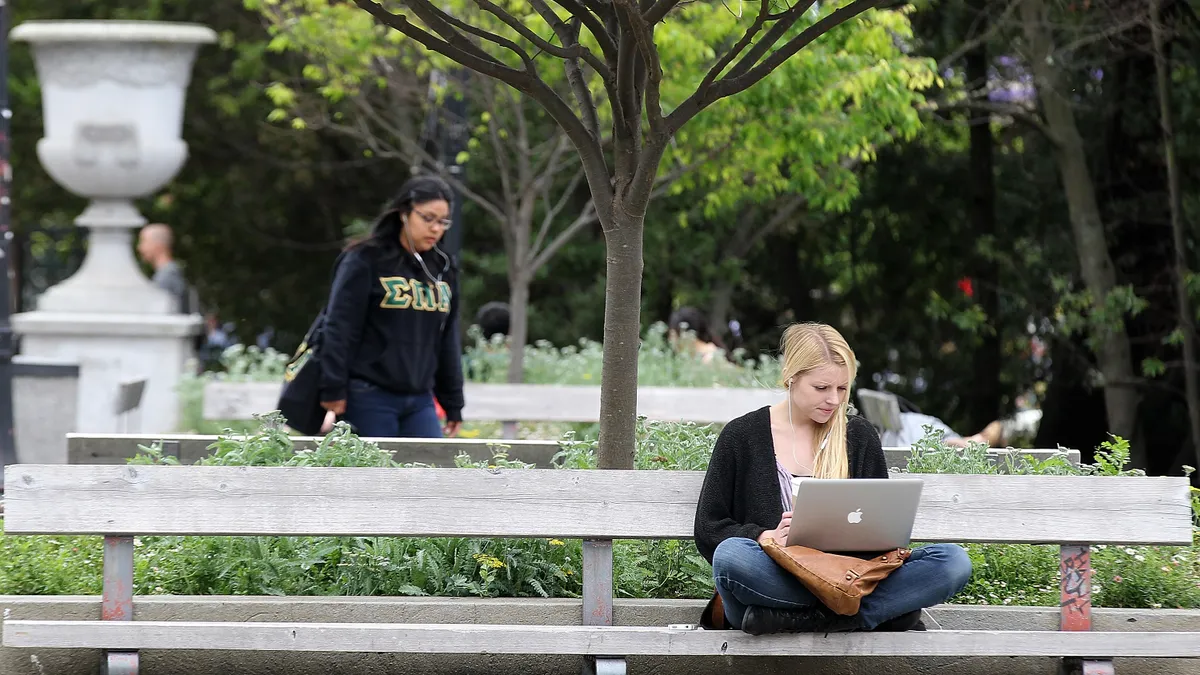Dive Brief:
- The average sticker price of college tuition and fees rose modestly in the 2022-23 academic year before adjusting for inflation, according to a new annual report from the College Board.
- This is the third year the College Board documented historically low cost increases. Public four-year institutions raised their average tuition and fees by 1.8% to $10,940 for in-state students, public two-year colleges increased theirs by 1.6% to $3,860 for in-district students, and private nonprofit four-year colleges upped theirs by 3.5% to $39,400, according to the report.
- However, average published tuition fell across the higher education sector when accounting for the inflation that continues to plague the U.S. economy. And net price, which is calculated by subtracting aid from tuition costs, was also projected to be lower in inflation-adjusted dollars.
Dive Insight:
The College Board’s report examines college pricing and student aid in a higher education landscape still marred by fallout from the coronavirus pandemic.
Undergraduate enrollment nationally continues to spiral downward, though in smaller declines than in past years. Enrollment among these students dropped by 1.1% this fall compared to last year, according to preliminary National Student Clearinghouse Research Center data released last week.
Many colleges have opted not to raise tuition despite the enrollment declines and the pandemic’s lingering economic effects. Some even reduced tuition during the early months of the health crisis. And at public colleges, officials sometimes faced pressure from lawmakers not to hike rates.
Experts have said keeping costs low can assure students stay enrolled or may draw back those who stopped out during the pandemic, though this pattern may not hold in light of institutions facing inflated expenses.
This is the third year the College Board tracked unusually low tuition increases. Last year, in-state undergraduate tuition at public four-year colleges rose by 1.6% and tuition at private four-year nonprofit colleges climbed by 2.1% before adjusting for inflation.
For 2022-23, the College Board estimated students’ average budgets — which includes tuition, fees, room and board, books and other personal expenses — at $27,940 for in-state students attending public four-year colleges. For in-district students attending public two-year colleges, it was $19,230.
Total expenses were much higher for those attending private nonprofit institutions, at an estimated $57,570.
The report also looks at borrowing, showing that total federal loans for undergraduates declined by 49% between the 2011-12 and 2021-22 academic years after adjusting for inflation.
Total federal grant aid slipped by 32% in inflation-adjusted costs during that time. Pell Grants, the primary source of federal aid, fell by 36%.
Pell Grant expenditures peaked at $44.3 billion in the 2010-11 academic year, but fell to $25.9 billion in 2021-22, a 42% decline.
However, between those years, institutional grant aid for undergraduate students increased by 53% to nearly $21 billion in last year’s dollars.















